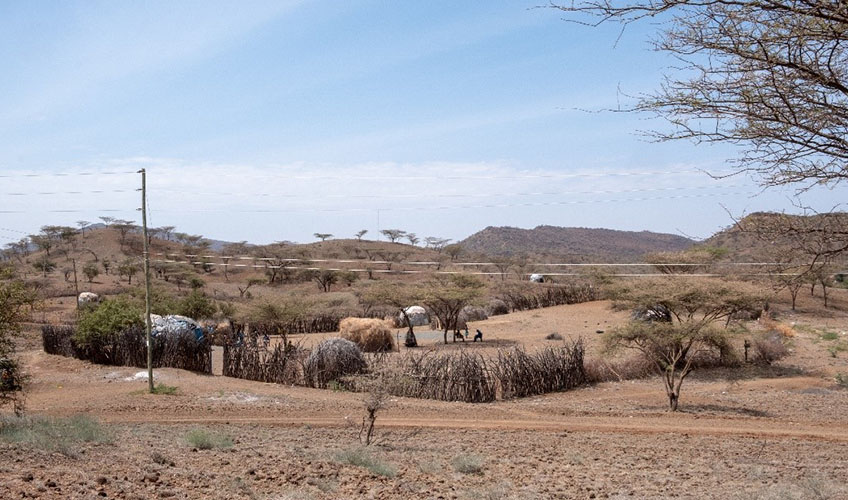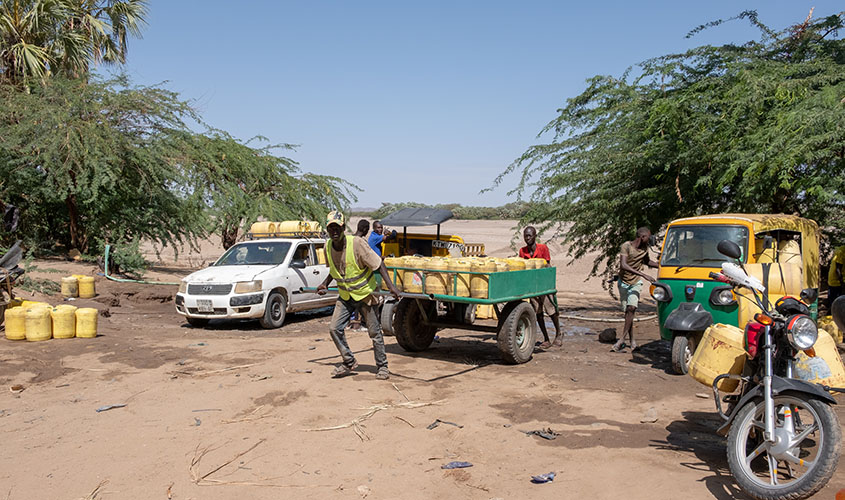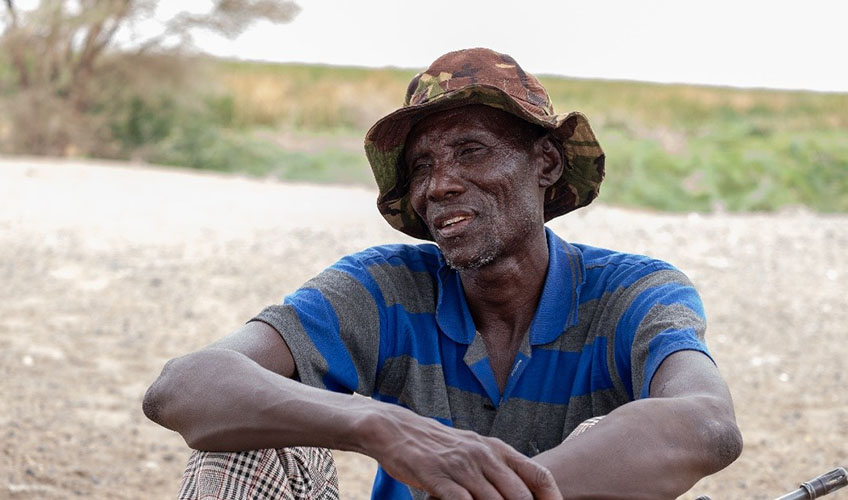“This is where the conflict comes in”: Resource challenges in Lake Turkana
Josephat Erupe is a senior warden for the Kenya Wildlife Service. It’s his responsibility to deal with wildlife issues that arise within Turkana county and to manage the natural resources that are protected by the Kenyan government. Given the impact of climate change and increasing demand for pasture and water in this arid region of northern Kenya, that is no simple task.
“In Lake Turkana we have three islands,” he explains. “Two are areas protected by the Kenyan government. We also have the Sibiloi National Park, and part of it is on the water. These areas are mostly breeding grounds for fish. This is where the conflict comes in.”
Changes to the climate have affected each of the communities that rely on various water sources around Lake Turkana. Given the salinity of the lake itself, people rely largely on boreholes and rivers for fresh water. The Horn of Africa is currently experiencing its worst period of drought for 40 years, however, and these water sources are running dry.

Conversely, erratic rainfall and deforestation on the Ethiopia side have led to the overflow of Ethiopia’s River Omo, which empties into Lake Turkana. This has increased the water level and changed the salinity of the lake, affecting fish breeding patterns.
These varied impacts have forced fishing and pastoralist communities to migrate to new areas in order to sustain their livelihoods. This has been a source of conflict in Turkana and Marsabit counties and along the Ethiopian border, as demand increases for scarce natural resources.
Unless action is taken to mitigate extreme weather and constructively manage community disputes, the rising temperatures, prolonged droughts and lowering water levels will continue to compound these issues. “I’m not a scientist, I’m a park manager,” says Erupe. “But if you look at what is happening around the lake, most of the changes can be attributed to climate change.”

Water management in Kenya is run through regional associations and committees. The government drills the water source and then hands it over to the elected water user association officials, who regulate the use of the water points. Other committees manage different natural resources, and a committee also helps settle disputes at the community level.
The roles in the committees are open to both men and women, and they are assigned to community members through a transparent voting process witnessed by government representatives. The council of elders, which has a central role in settling disputes when conflict arises, also has the responsibility of arranging the grazing patterns and access for people and livestock to the waterpoints and the lake. This arrangement regulates when livestock can come in large numbers to the lake’s shores.
Regional Rangeland Management Committees are being organised to improve the management of the pasture – something new to the communities, as land and grazing areas used to not be controlled. Traditionally, rangelands are communally shared, and people can migrate in groups to find the pasture. Still, elders are informed about the movements, lead the decisions around migration and have an oversight on the access to land.
In Kibish, access to water is not guaranteed to all, as people need to line up to access the water points. Moreover, those who don’t pay the agreed amount are not allowed to fetch water for their livestock. People are encouraged to contribute some money to ensure the functioning of the generator-powered boreholes. Often households headed by an elderly person have trouble in accessing water and pasture, as they have difficulties in moving.

Muchu Lomorukai Kerio is vice-chair of the Council of Elders in Todonyang, and a National Police reserve constable. He works towards settling disputes over water resources and managing the shifts when large numbers of livestock can drink from the lake. “Climate change is affecting the state of pasture which livestock depend on,” he says. “There is no water available in grazing lands, making life difficult for pastoralists.”
He has seen the effect of the prolonged drought and water scarcity on the grazing land in Todonyang, and many pastoralists turning to fishing, causing community disputes. His main concern is that “environmental stress like drought will cost the lives of many people in Turkana”.
He sees positive possibilities in new water-related peacebuilding activities like the Water, Peace and Security (WPS) partnership though. The so-called ‘kraal elders’ are involved in a process of peacebuilding and reconciliation, to heal the trauma caused by previous violent conflict. He sees the inclusion of representatives like chiefs and assistant chiefs as crucial to a serious peacebuilding process. The outcomes so far have been positive, he says, and “peaceful coexistence is achievable in the near future”.
This is the second part in a series of articles about the work of the Water, Peace and Security (WPS) partnership in the Lake Turkana region of northern Kenya. WPS brings together international and local stakeholders to identify and understand water-related security risks and to prevent and mitigate conflict.



